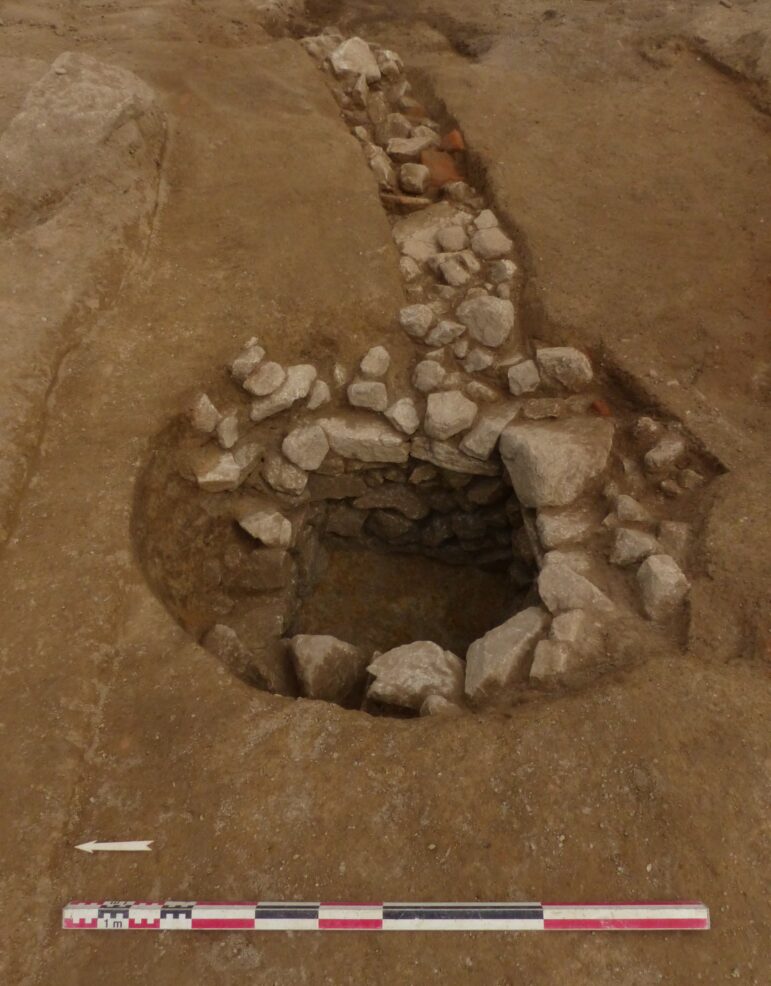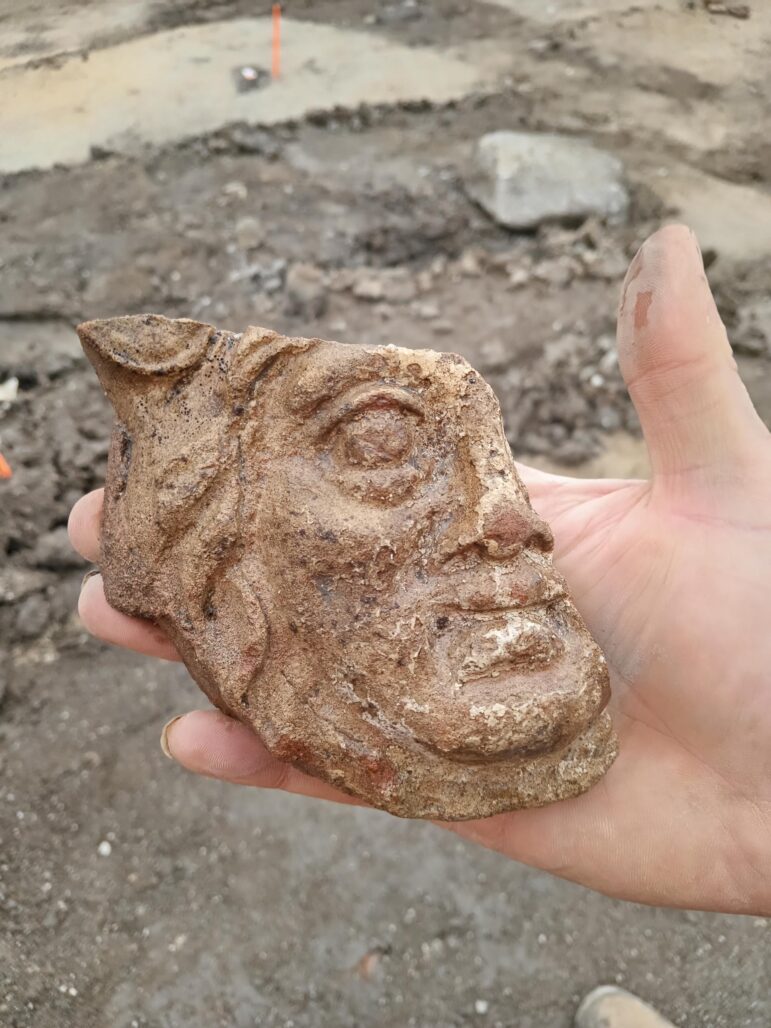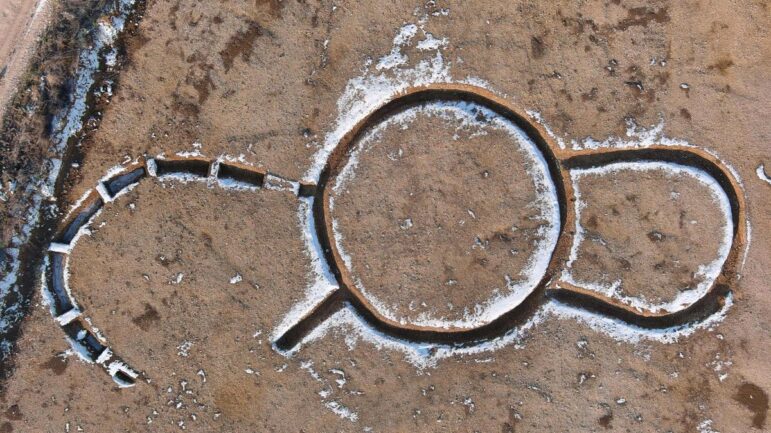
Uncovering the Past
PARIS – The National Institute of Preventive Archaeological Research (INRAP) in France has revealed not one but two groundbreaking Neolithic discoveries.
In one find, INRAP’s team of archaeologists has uncovered the remnants of a Roman-era landscaped pool and surrounding wall encircling a natural freshwater spring. They speculate that this structure may have been erected atop the remains of a significantly older, likely sacred well dating back 4,500 to 6,000 years to the Neolithic period when the site was venerated.
The archaeological remains were discovered in close proximity to the village of Chamborêt, situated approximately 12 miles (20 kilometers) to the north of the southwest-central city of Limoges.
INRAP speculates that the Roman ruins originate from the third century, corresponding to the Late Empire era. Among the artifacts discovered at the site is a ceramic depiction of a deity or Medusa, strategically positioned near the water source. The site also yielded ceramic fragments and coins from the late Roman Empire.

The spring near the village of Chamborêt. Image Credit: INRAP
The spring was important enough that it was encased within a wooden box buried in a pit filled with flat stones by the Romans. Subsequently, this setup supplied water to a landscaped pool or basin, encircled by an arc or wall constructed from granite blocks. Within this enclosure, ceramic fragments dating from the third and fourth centuries were discovered.
Archaeologists uncovered numerous late Roman-era coins along with a ceramic fragment portraying a portion of a face. This fragment is believed to depict either a deity or Medusa, a motif prevalent during late Roman times and believed to possess protective qualities possibly against malevolent forces. The ceramic guardian or water deity was positioned above the landscaped basin supplied by the spring.

The head of a water deity or Medusa found near the village of Chamborêt. Image Credit: INRAP
However, the site was apparently abandoned and revived by the Romans. The earliest traces of structures at the site appear. While the exact age of these constructions remains undetermined, artifacts discovered within them imply that they likely served as an early residence and farm, according to an INRAP statement.
“Water clearly played a major role in the occupation from the earliest times,” the researchers said in a statement.
At the site, archaeologists discovered various flint artifacts, including a fragment of a “Grand Pressigny” dagger. This type of dagger is named after the Grand-Pressigny archaeological site in central France, where numerous Neolithic long blades of this kind have been unearthed. They were likely presented as offerings during the Neolithic era.
More research is needed to confirm the ages of the items and the site. As for the spring itself, it is still active.
But this is not the only recent Neolithic discovery announced by INRAP. A second find announced earlier in April is so spectacular that it has been described as having the potential to rewrite our historical understanding of this part of Europe.
Excavations conducted at a site in eastern France near Marliens, about nine miles southeast of Dijon, have unveiled a succession of human habitation also stretching across millennia, from the Neolithic period or New Stone Age to the Iron Age. The earliest evidence of occupation comprises a mysterious monument characterized by three interconnected enclosures, as detailed in INRAP’s press release.

Aerial view of the new monument site. Image Credit INRAP – Jérôme Berthet
At the heart of this monument lies a circular enclosure, approximately 36 feet in diameter. Extending northward from the central circle is a horseshoe-shaped enclosure measuring 26 feet in length, while to the south, an almost square-shaped enclosure with rounded corners protrudes from the opposite side.
The monument appears to have items from 8,000 years ago including flint objects. Radiocarbon dating is being used to verify the date estimates. INRAP speculates these objects are part of the Bell Beaker archeological culture.
Of particular note, archaeologists discovered a necropolis comprising five circular enclosures, containing burial remains and evidence of a funeral pyre. Estimated to originate from the Middle-Late Bronze Age in France, around 1500-1300 B.C., this burial site yielded various artifacts, including copper alloy pins, scarce ceramic fragments, and a necklace adorned with approximately forty amber beads.
INRAP added about the site, “This type of monument seems unprecedented and currently no comparison has been possible.”
The Wild Hunt is not responsible for links to external content.
To join a conversation on this post:
Visit our The Wild Hunt subreddit! Point your favorite browser to https://www.reddit.com/r/The_Wild_Hunt_News/, then click “JOIN”. Make sure to click the bell, too, to be notified of new articles posted to our subreddit.